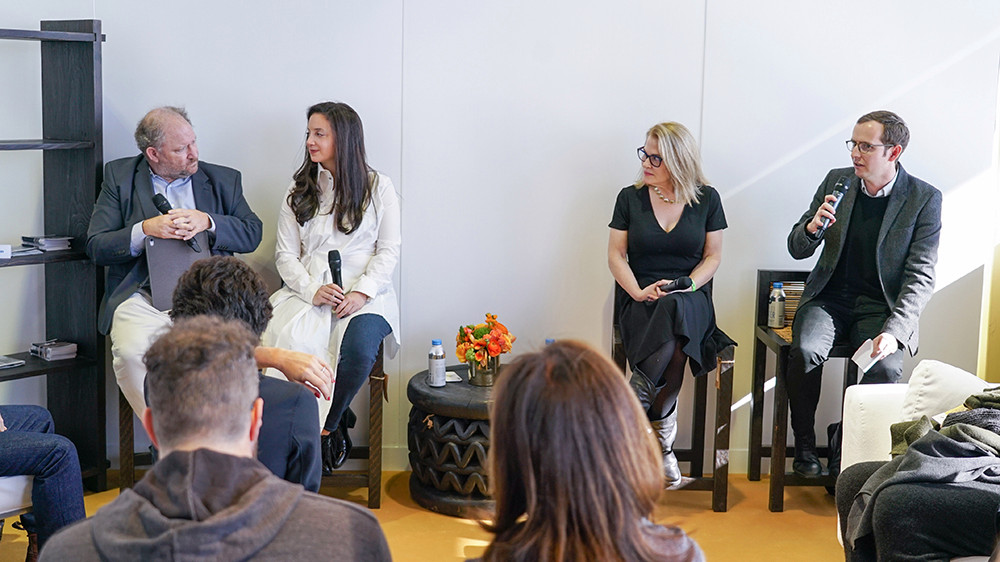[ad_1]
On March 7, Art in America hosted a discussion about the future of digital art in the Yieldstreet x Athena VIP lounge at the Armory Show in New York. Michael and Anne Spalter, who have built one of the world’s foremost collections of early computer art, joined A.i.A. editor William S. Smith and tech entrepreneur Laura Lehmann in a wide-ranging conversation about how new technologies can fuel creative endeavors. The panel was part of a series of live art and technology events that began during Frieze Week in Los Angeles in February. This talk series builds on A.i.A’s January 2020 issue about AI and generative art.
The Armory conversation focused on how digital technologies are driving a paradigm shift in the arts while broadening access to the most innovative cultural production. Michael Spalter emphasized that computer art needs to be recognized as a major global movement in its own right and compared the introduction of digital tools to the development of photography. He noted that major strides are underway to historicize key developments in computer art from the mid-twentieth century, including a number of upcoming exhibitions at major museums around the world that will feature loans from the Spalter Collection. Yet as artist and scholar Anne Spalter pointed out, like many early avant-garde movements, computer artists in the early days faced neglect and even hostility. She recalled how Manfred Mohr was pelted with tomatoes while lecturing on digital technology and noted some of the technical and financial struggles that artists including Yoshi Abe faced when trying to develop their art.
The Spalters have taken the unusual step of building a website populated with detailed information about the works in their collection. While many private collectors tend to guard such information, the Spalters’ site, Spalterdigal.com, embodies an ethos of openness and accessibility shared by many of the artists in their collection. Lehmann spoke in these terms as well, arguing that computer art will prove especially amenable to younger viewers for whom the process of collecting and generating images is a key part of their experiences on social media. Lehmann noted that algorithmic tools have transformed how people access cultural objects, receiving recommendations based on their tastes and preferences. She also speculated that similar tools could transform how art is made, allowing everyone the ability to use algorithmic image processing tools developed by artists.
[ad_2]
Source link


